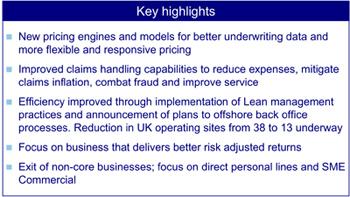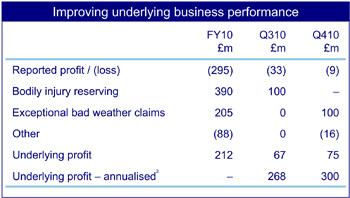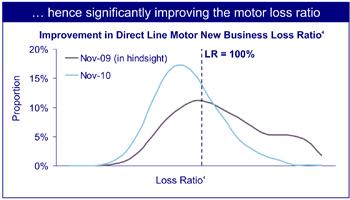View the figures and the thinking behind the insurer's turnaround
Irrespective of the likelihood of RBSI achieving a highly ambitious 20% return on equity in time for 2013, the bank-owned insurer has shown significant signs of improvement.
Operating loss in last year’s fourth quarter reduced to £9m, having been at £33m in the previous quarter.
Undoubtedly, the huge reserve strengthening – around £868m in two years – has helped bring RBSI back to the stability.
However, sources close to the company say chief executive Paul Geddes, who was parachuted into a brewing firestorm in May 2009, and his management team, have worked tirelessly and effectively to stem the losses and help bring the business back to an even keel.
RBSI is relying on a four-pronged approach to transform the business in time for 2013.
• First, as stated in the annual report, RBSI has slashed its expense base by 7% last year. RBSI is achieving a lower expense base through off-shoring back offices, reducing UK operating sites from 38 to 13 and cutting up to 2,000 jobs.
• Secondly, the company invested in new pricing and underwriting systems, claims management and fraud investigations and new IT.
• Thirdly, RBSI has scaled back unprofitable business – such as fleet and taxi business, and placing NIG’s personal lines book into run-off.
• Finally, RBSI pushed through double-digit rate rises in private motor last year and will continue to increase rates in 2011.




These results are already starting to come through in improved loss ratios.
Compared to November 2009, RBSI is now recording significantly lower loss ratios in a much greater proportion of the business.
1 Source: Consumer Intelligence, DfT, NOP, Strategy team research and analysis. 2 Not seasonally adjusted. 3 Mix improvement implied by the movement of actual average premium v known price increases. 4 Loss ratio represents the modelled claims cost as a proportion of the premium income of each policy sold.





































